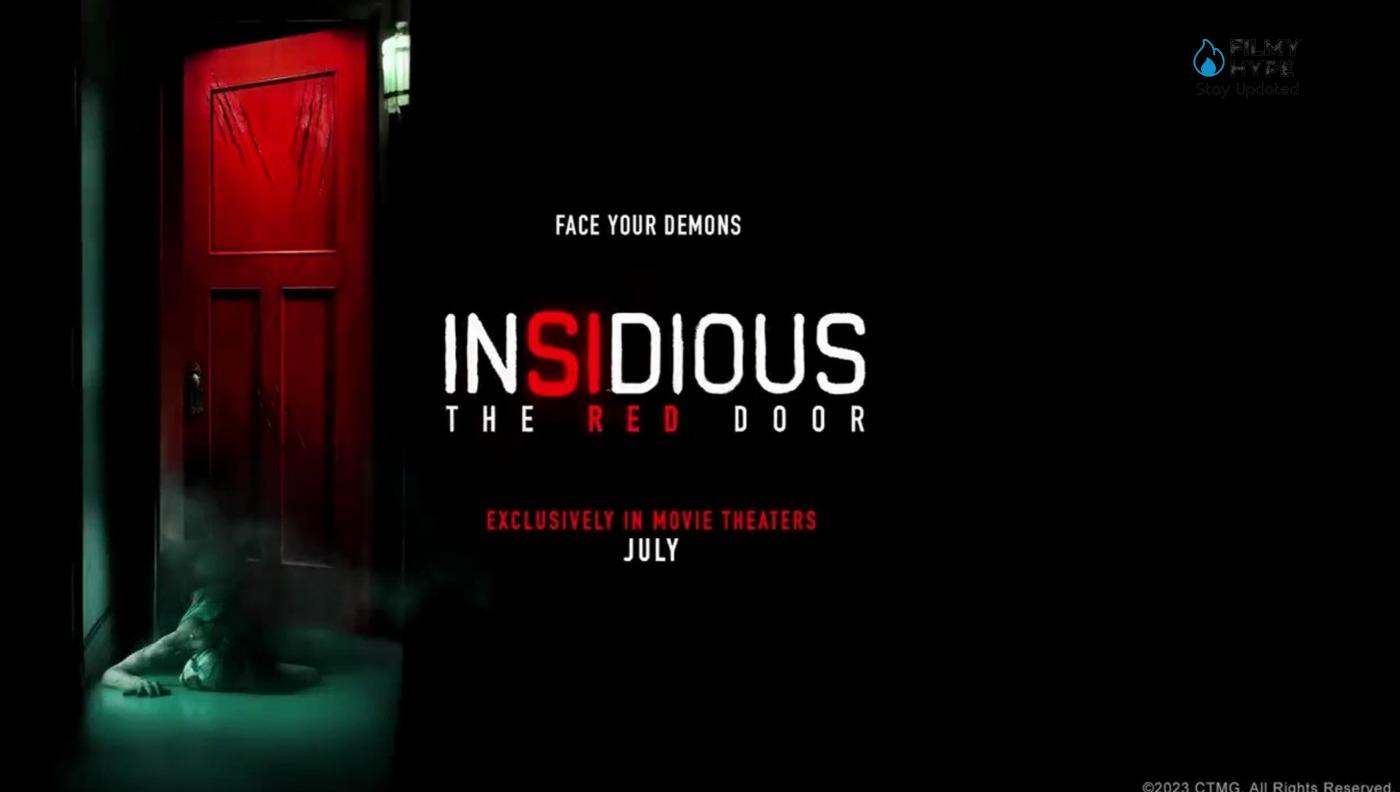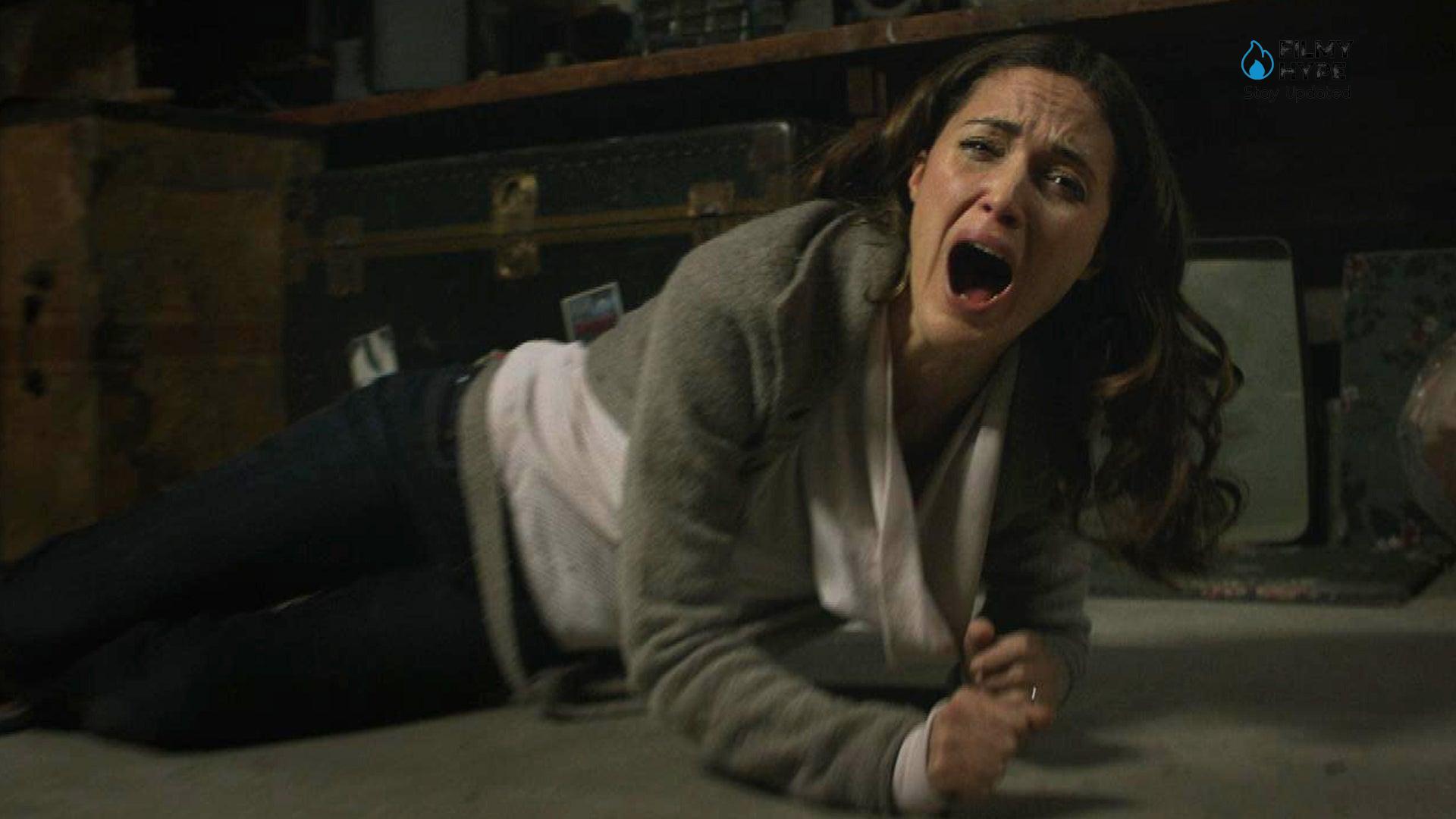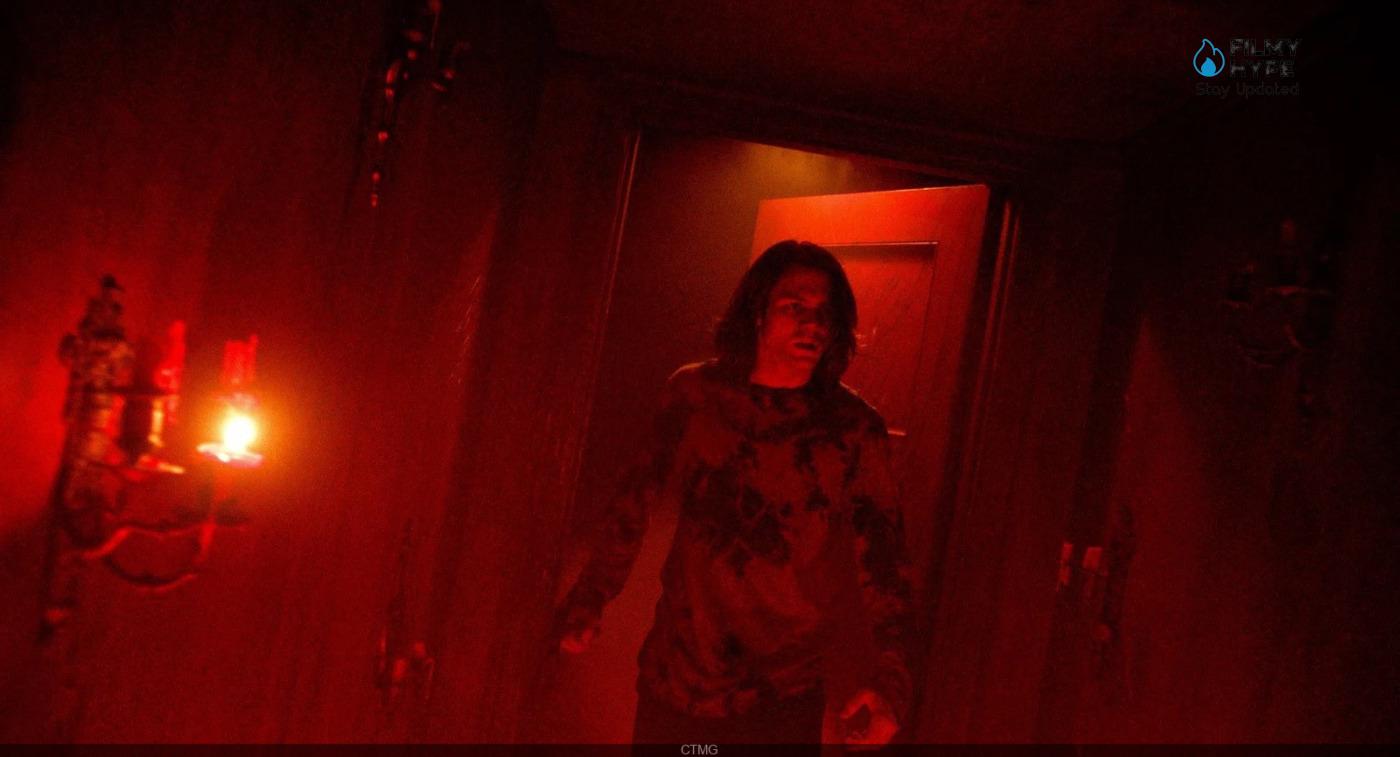Insidious: The Red Door Review: Maintaining A Nostalgic Profile from Start To Finish
Cast: Patrick Wilson, Ty Simpkins, Lin Shaye, Rose Byrne
Directed: Patrick Wilson
Where we Watched: In Cinema
Filmyhype.com Ratings: 3/5 (three stars)
Insidious: The Red Door brings back to the big screen some primordial terrors, children of a saga that has always known how to entertain its audience, even at the expense of the thematic and structural repetition that has not convinced the critics previously specialized. With this fifth installment, we are faced with a story that focuses heavily on its past and on what we had seen some time ago in the first two films, creating a narrative that is both curiously nostalgic and frighteningly close to its two main protagonists. Focusing again on the personal and paranormal events that have always tormented the Lambert family, Patrick Wilson, the director, can continue with the plot that opened this film saga, however trying to always take into consideration the previous chapters and some key elements that we have seen in the past. We go back to where it all began, from the Lambert family, from Father Josh and son Dalton, from that red door behind which the terrifying and difficult-to-contain Elsewhere is hidden.

He therefore returns to the starting point, to close a circle, perhaps to open others, certainly to offer a sense of completeness to one of the most important horror sagas of recent years, produced by Jason Blum’s Blumhouse Productions. Let’s talk about Insidious, with the new film Insidious – The Red Door, completes what was evoked in 2010 by James Wan and Leigh Whannell with the first chapter. A chapter which was then followed Insidious Chapter 2, still starring the Lambert family, and subsequently the prequels Insidious: The Last Key. After having therefore narrated the origins of the mythology of the saga, in the fifth chapter we return to the original protagonists, to find out what happened to them ten years after the last time we saw them, or when Josh and his son Dalton, at the end of the second film, they chose to forget, through hypnosis, the terrible nightmares they lived and above all to forget their ability to make astral journeys.
Insidious: The Red Door Review: The Story Plot
Josh and his son Dalton, now an adult, will have to return to Elsewhere to finally free themselves from the demons that still haunt them. The “happily ever after” is a bit difficult for a family that has been through as much as the Lamberts. The terrifying events that saw them as protagonists left on Josh (Wilson), Dalton (Ty Simpkins), Renai (Rose Byrne), and Foster (Andrew Esposito), wounds that are impossible to heal: even if the memory of what happened, from the coma supernatural of the eldest to the numerous trips elsewhere of the head of the family, has been forcibly canceled, the aftermath of that nightmare are still felt, even almost ten years later. Josh and Renai have broken up, and he struggles to maintain a relationship with his three children, who grow further away from him. Gathering all together for the sad occasion of Grandmother Lorraine’s funeral convinces Josh to take a step towards Dalton, and at the suggestion of his ex-wife decides to accompany him to college for the start of the courses.
The first days of the university for Dalton will not be easy, the boy is a talented artist, but painting and drawing seem to bring back disturbing memories in him: a red door and something terrifying and cruel that seems to have awakened, ready to do anything to finish what he started. However, the only hope for Dalton and his father is hidden behind that door, in that past that perhaps shouldn’t be forgotten, and which has its roots in an even more distant story, that of Josh’s father… Insidious: The Red Door is strangely connected with a particular sense of “coming home” and with some nostalgic sensations that cannot fail to please, at least in the film’s first moments.

Those who have followed the saga are well aware of how these films choose to speak to their audience, involving them in frightening contexts in which there are very few ways out. The fifth chapter is no less in this respect, trying to scare both through primal terrors and simple sudden effects. The story of Insidious: The Red Door picks up 9/10 years after the events we witnessed in Insidious Chapter 2, putting Josh Lambert (Patrick Wilson) and his son Dalton (Ty Simpkins). It seems that the final choice made in the second film is having negative effects, generating a series of torments that are projected directly onto their life and relationship. In this ending, the two chose to have their memory erased to forever forget the horrors they had experienced firsthand, together with their family, up to that moment. However, the passing of the years hasn’t made things easy, and when Dalton is preparing to move to college, the shadows of a terrible and indefinite past come back to peep out.
Insidious: The Red Door Review and Analysis
The main theme that moves every single event of Insidious: The Red Door is the father-son relationship, and it is evident from the beginning. The centrality and importance of this dynamic is not something new for the Insidious saga, even if it now takes on a much more adult meaning than in the past, playing with the current protagonists, on what they have forgotten and on what they still have to learn. In the frightening chaos of apparitions and personal torments, both Josh and Dalton must find themselves again, must re-understand what they can do, and come to terms with some abilities that in the past they had tried to suppress at their core.
It is precisely this introspective process that triggers the main events of both nostalgic and self-quoting stories, developing a series of reasoning that feeds the narrative in two apparently distinct but always connected paths. The search for one’s origins at all costs marks the path of two human beings who do not know that they are dragging behind some traumas that are impossible to erase, trying to come to terms with entities that not even they understand. In this, the writing of Insidious: The Red Door takes on intrinsically psychological characteristics, choosing to continue the story with a more psychoanalytic approach. Trying to understand one’s condition and the choice to face it certainly represents a step forward, while not bringing anything new to a saga that plays a lot with the elements that have always distinguished it.

As in the past, in Insidious: The Red Door all the key elements of the saga return, reworked in a narrative that seeks to bring together what has been seen so far, even in a subtle way at times. The Terror of Elsewhere still knows how to envelop the more experienced spectators, trying to surprise them with some gimmicks that can fuel tension, without innovating too much compared to what has been seen in the past. Fear remains a constant throughout the narrative, also because Wilson can insert the most disturbing elements, continuously playing with the rhythm of the film and with its possibilities of breaking, both in visual and sound terms.
While outlining a relatively exciting story in images, this Insidious: The Red Door fails to entertain to the end, unfortunately, proposing a series of developments that tend to repeat past moments, in a path into the present that is certainly fascinating, even if not too incisive. As events continue, one perceives the lack of something, and this sensation persists throughout the narration which, even outlining a path of growth and formation for both protagonists and making use of some previous iconography, points to a path that opens, rather than to close, opting for a look towards apparently distant shores; all outlined with an approach that towards the end becomes both cloying and enough hasty.
The cast – which returns almost in full (even those who are no longer alive) from the first two films – however works very well in the roles, in particular, Ty Simpkins once again as Dalton convinces and supports the character and his story well. The Lamberts work well together for the chemistry that unites them, making the relationships that unite them extremely credible and engaging the story. The ending seems quite definitive, even if a glimmer of light is still left open for future developments in the plot. This new chapter will satisfy fans of the saga, Insidious: The Red Door pulls the strings of what was said in the first two films, trying to answer all the questions and expand this horror universe even further. The result obtained by Wilson, we reiterate, however, works only partially: the moments of pure terror experienced with Insidious (1 and 2) are far away, small pearls of contemporary terror cinema that deserve a place of honor among the most successful works by James Wan.
The choice to keep Insidious: The Red Door within the coordinates traced by the previous films also allows screenwriter Scott Teems to focus more on some specific aspects. The characters, in particular, benefit from this attention, presenting themselves to viewers in a new light. The time elapsed between the second film and this one is taken into account, with all the emotional changes this may have brought to the protagonists, especially Josh and Dalton. It is the relationship between them and the need not to forget but rather to face the traumas that dominate the film, with the horrors we witness taking the form of metaphorical obstacles on their path to reunion.
However, this shouldn’t make us think of a family drama aspect, there are moments of pure terror and even if they don’t reach those proposed by the first two films, they certainly come very close. Inevitably, however, the authors also felt the need to insert a feeling of “end”, pulling all the strings of the speeches proposed by the previous chapters, answering as many outstanding questions as possible, thus combining horror with more intimate nuances. The result won’t be memorable, but it turns out to be the right epilogue for the saga.
Insidious: The Red Door Review: The Last Words
Insidious: The Red Door is a film that attempts to continue the narrative intentions of a rather large horror saga, maintaining a nostalgic profile from start to finish. This sentimentality is reflected in the plot and in the formal construction that accompanies its development, proposing a new story that intrigues and terrifies without surprising the end, however. Thus, the cinematic past of these stories becomes the main fuel for a plot that “wants to move forward”, without completely detaching itself from those elements that made it famous with the general public. Insidious: The Red Door pulls the strings of the Insidious saga well, the fluctuating rhythm and the continuous use of jump scares, however, make it qualitatively inferior to the first chapters of the story.







